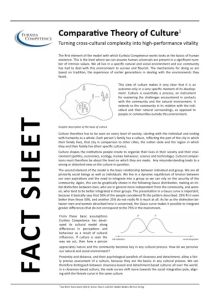Join getAbstract to access the summary!

Join getAbstract to access the summary!
Hans J. Roth
Comparative Theory of Culture
Turning Cross-Cultural Complexity into High-Performance Vitality
EurAsia Competence, 2016
What's inside?
Ever gone wading in the murky waters between intrinsic human similarities and vast cultural differences?
Recommendation
EurAsia Competence has developed a model to understand cross-cultural interactions. Understanding starts with the intrinsic universal tendencies shared by all humans, but at some point cultures diverge and the differences can seem to outweigh the similarities. That’s where the misunderstandings begin, and it’s also where EurAsia Competence hopes to be able to bridge the gap. getAbstract recommends this fact sheet from EurAsia Competence to those who want to increase their cross-cultural competence in an increasingly globalized world.
Summary
About the Author
Hans J. Roth spent 30 years as a Swiss diplomat in Beijing, Shanghai and Hong Kong. He is currently chairman of the board at EurAsia Competence.

















Comment on this summary